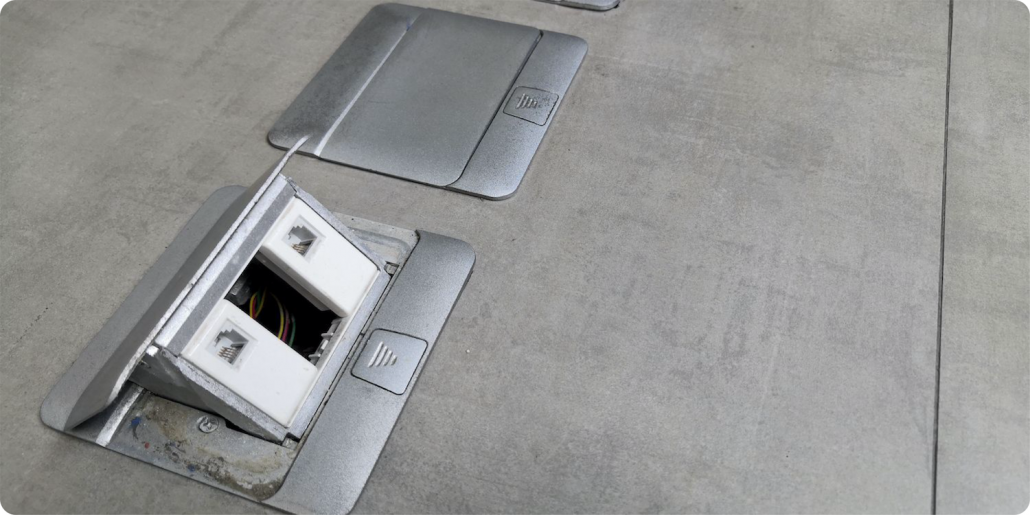August 2, 2021 | Cristina Dinulescu
Knowing the gauge of the wires in your home or office may not necessarily be something you’re interested in, but like with everything else it can be helpful to have basic knowledge. Wiring should always be left to professional, licensed electricians, but you might need to shop for supplies and knowing the wire gauge sizes will allow you to quickly find what you need.
The gauge of a wire refers to thickness — the thicker the wire, the smaller the gauge. Higher gauge numbers represent thinner wires. Each of these thicknesses is better suited for a different purpose. Think of craft wire, for example. This needs to be thin, in order to bend, form and twist to support the making of jewelry or any other craftwork.
In the United States, there is a standard method of measuring and determining cable thickness, known as American Wire Gauge or AWG. This is applicable to electrically conductive, round and solid wire, made from non-ferrous material. The reason why wire gauge sizes are so important is because the thickness affects the wire’s electrical properties, such as resistance or load-carrying capacity.
How To Choose The Right Wire Gauge Sizes?
As mentioned above, gauge is an important factor to take into account when buying an electrically conductive wire for a particular application. But the right gauge depends on several factors, such as the amperage ratings of the circuits. Higher ratings need thicker wires in order to accommodate the load and not heat up. If the wires are too thin for the amperage, they could fail or even ignite.
In order to avoid such issues, before looking into the right wire gauge sizes, you should know the total amperage of your system. The electrician should be able to help with that by calculating the planned load, the connected load and the circuit length. Then, you can choose a wire that’s appropriate for that.
Although the gauge is a number that refers to a wire’s thickness, it also helps provide information on other technical specs. There is a relationship between a wire’s gauge and its diameter for instance. The same goes for resistance or capacity. Check out below the information you can determine by knowing the gauge of a wire:
- Diameter – smaller wire gauges have larger diameters, while larger numbers will represent smaller diameters. For instance, AWG 40 is .0031 inches in diameter, while AWG 4 is 0.2043 inches. The diameter doubles with every six level decrease in gauge size, which means a three-gauge wire has double the diameter of a nine-gauge one.
- Area – the formula A= πr2 helps calculate the cross-sectional area of round wires, where r represents 1/2 diameter. The wire’s cross-sectional area doubles when the gauge size decreases three levels. This means a six-gauge wire has double the cross-sectional surface area of a nine-gauge wire.
- Feet per pound – this represents the length of wire needed (measured in feet) to reach one pound in weight. AWG 4 wire requires 7.918 feet, while AWG 40 requires 34.364 feet.
- Resistance – measured in ohms per 1000 feet, resistance depends both on the wire’s length and thickness. Longer wires have greater resistance, but if the wires are the same length, the thicker wire has smaller resistance than the thinner wire. For instance, AWG 4 wire has a resistance of .2485Ω for 1000 feet, while AWG 40 wire has 1079Ω for the same length.
- Current capacity (amps) – lower gauge wires are thicker, which means they can accommodate more electrons than higher gauge wires.
Applications For Different Wire Gauge Sizes
Due to the fact that different gauges carry different electrical and physical properties, they are therefore suited for different applications. Thinner wires are generally better suited for lightweight applications, while thicker gauges are appropriate for heavy-duty applications. Here are some of the most common use cases for various wire gauges:
| Gauge size | Applications |
| Gauge 4 | furnaces & heaters |
| Gauge 6 | kitchen ranges & cooktops |
| Gauge 10 | ac units, water heaters & clothes dryers |
| Gauge 12 | small ac units, residential outlets |
| Gauge 14 | general circuits, lighting fixtures, devices |
| Gauge 16 | extension cords |
| Gauge 18 | low-voltage cords & lighting |
The AWG standards range from 0000 to 40, the smallest gauge being able to have up to 302 Amps, while the 40 gauge can only handle up to 0.0137 Amps. Usually, residential wiring requires a range between gauge 2 or 3 and 14.
Wire Gauge Sizing Chart
The way the American Wire Gauge standard was established is based on the number of dies needed to draw the copper down to the proper size. That’s the reason why the higher the AWG number, the smaller the wire.
This standard, which includes the diameters and the cross-sectional areas, is continuously maintained by the ASTM, which stands for the American Society for Testing and Materials. Even though it’s called American, the organization is actually international and helps standardize and develop consensus across many industries.
Checking the ASTM for wire gauge sizes is the best place to start. They have updated charts in the ASTM B258 – 18 Standard Specification for Standard Nominal Diameters and Cross-Sectional Areas of AWG Sizes of Solid Round Wires Used as Electrical Conductors. You can also use the chart below for quick and easy referencing.
| AWG gauge | Diameter (in) | Diameter (mm) | Conductor cross section in mm2 | Ohms per 1000 ft. |
| 0000 | 0.46 | 11.684 | 107 | 0.049 |
| 000 | 0.4096 | 10.40384 | 84.9 | 0.0618 |
| 00 | 0.3648 | 9.26592 | 67.4 | 0.0779 |
| 0 | 0.3249 | 8.25246 | 53.5 | 0.0983 |
| 1 | 0.2893 | 7.34822 | 42.4 | 0.1239 |
| 2 | 0.2576 | 6.54304 | 33.6 | 0.1563 |
| 3 | 0.2294 | 5.82676 | 26.7 | 0.197 |
| 4 | 0.2043 | 5.18922 | 21.1 | 0.2485 |
| 5 | 0.1819 | 4.62026 | 16.8 | 0.3133 |
| 6 | 0.162 | 4.1148 | 13.3 | 0.3951 |
| 7 | 0.1443 | 3.66522 | 10.6 | 0.4982 |
| 8 | 0.1285 | 3.2639 | 8.37 | 0.6282 |
| 9 | 0.1144 | 2.90576 | 6.63 | 0.7921 |
| 10 | 0.1019 | 2.58826 | 5.26 | 0.9989 |
| 11 | 0.0907 | 2.30378 | 4.17 | 1.26 |
| 12 | 0.0808 | 2.05232 | 3.31 | 1.588 |
| 13 | 0.072 | 1.8288 | 2.63 | 2.003 |
| 14 | 0.0641 | 1.62814 | 2.08 | 2.525 |
| 15 | 0.0571 | 1.45034 | 1.65 | 3.184 |
| 16 | 0.0508 | 1.29032 | 1.31 | 4.016 |
| 17 | 0.0453 | 1.15062 | 1.04 | 5.064 |
| 18 | 0.0403 | 1.02362 | 0.823 | 6.385 |
| 19 | 0.0359 | 0.91186 | 0.653 | 8.051 |
| 20 | 0.032 | 0.8128 | 0.519 | 10.15 |
| 21 | 0.0285 | 0.7239 | 0.412 | 12.8 |
| 22 | 0.0253 | 0.64516 | 0.327 | 16.14 |
| 23 | 0.0226 | 0.57404 | 0.259 | 20.36 |
| 24 | 0.0201 | 0.51054 | 0.205 | 25.67 |
| 25 | 0.0179 | 0.45466 | 0.162 | 32.37 |
| 26 | 0.0159 | 0.40386 | 0.128 | 40.81 |
| 27 | 0.0142 | 0.36068 | 0.102 | 51.47 |
| 28 | 0.0126 | 0.32004 | 0.080 | 64.9 |
| 29 | 0.0113 | 0.28702 | 0.0647 | 81.83 |
| 30 | 0.01 | 0.254 | 0.0507 | 103.2 |
| 31 | 0.0089 | 0.22606 | 0.0401 | 130.1 |
| 32 | 0.008 | 0.2032 | 0.0324 | 164.1 |
| 33 | 0.0071 | 0.18034 | 0.0255 | 206.9 |
| 34 | 0.0063 | 0.16002 | 0.0201 | 260.9 |
| 35 | 0.0056 | 0.14224 | 0.0159 | 329 |
| 36 | 0.005 | 0.127 | 0.0127 | 414.8 |
| 37 | 0.0045 | 0.1143 | 0.0103 | 523.1 |
| 38 | 0.004 | 0.1016 | 0.00811 | 659.6 |
| 39 | 0.0035 | 0.0889 | 0.00621 | 831.8 |
| 40 | 0.0031 | 0.07874 | 0.00487 | 1049 |





